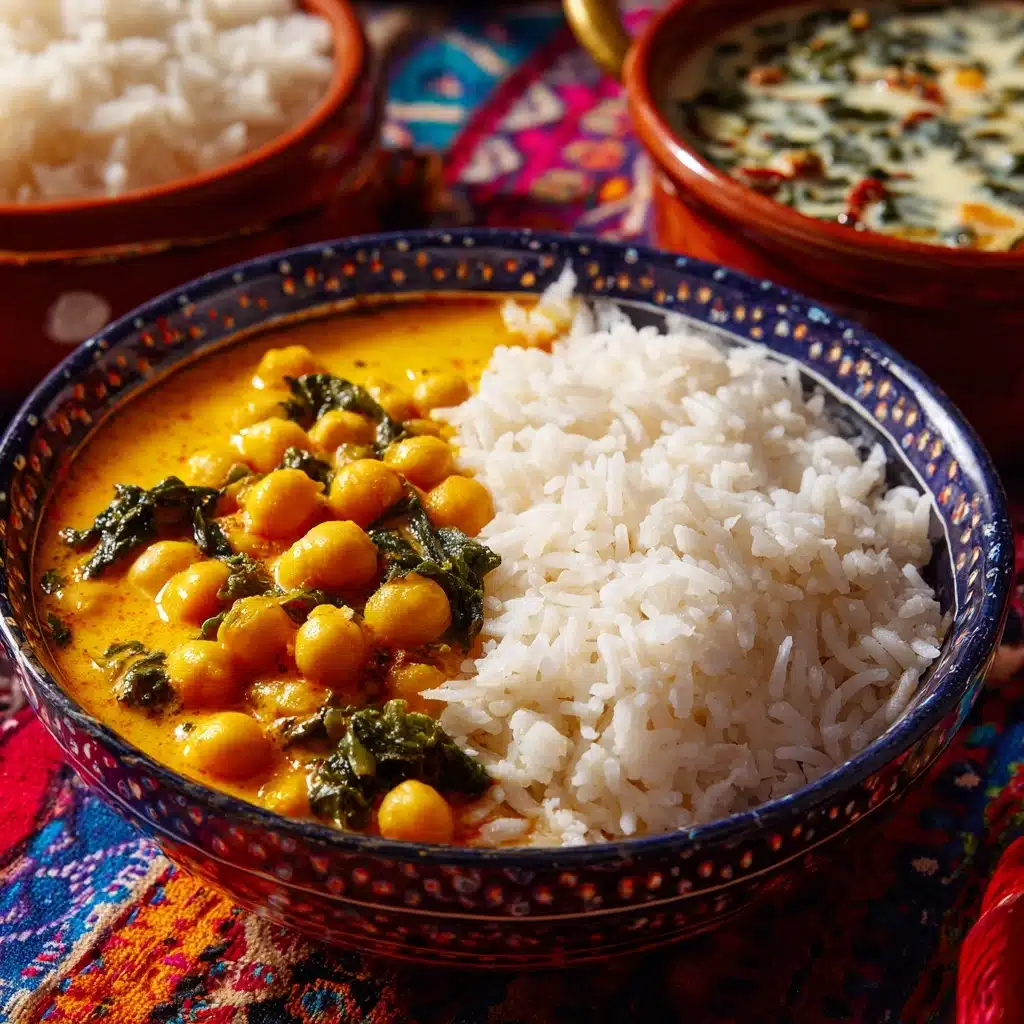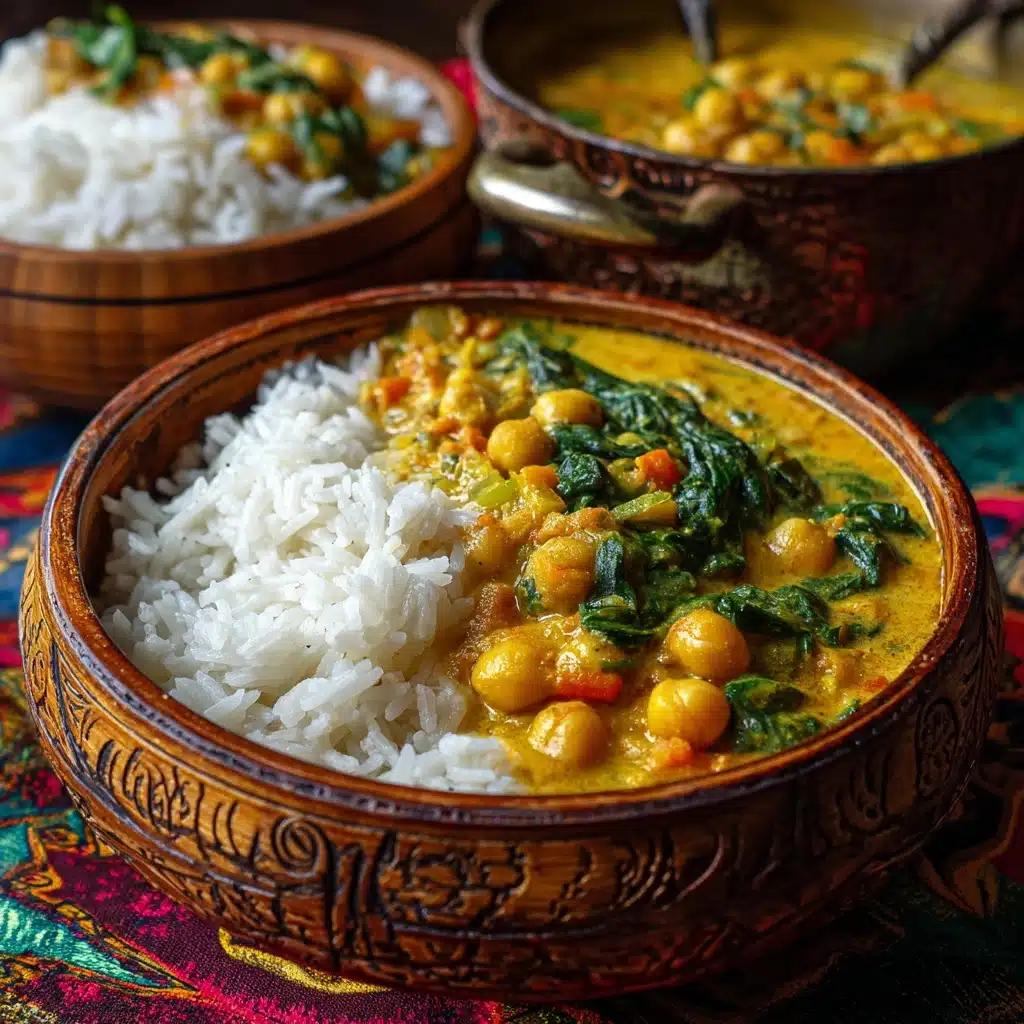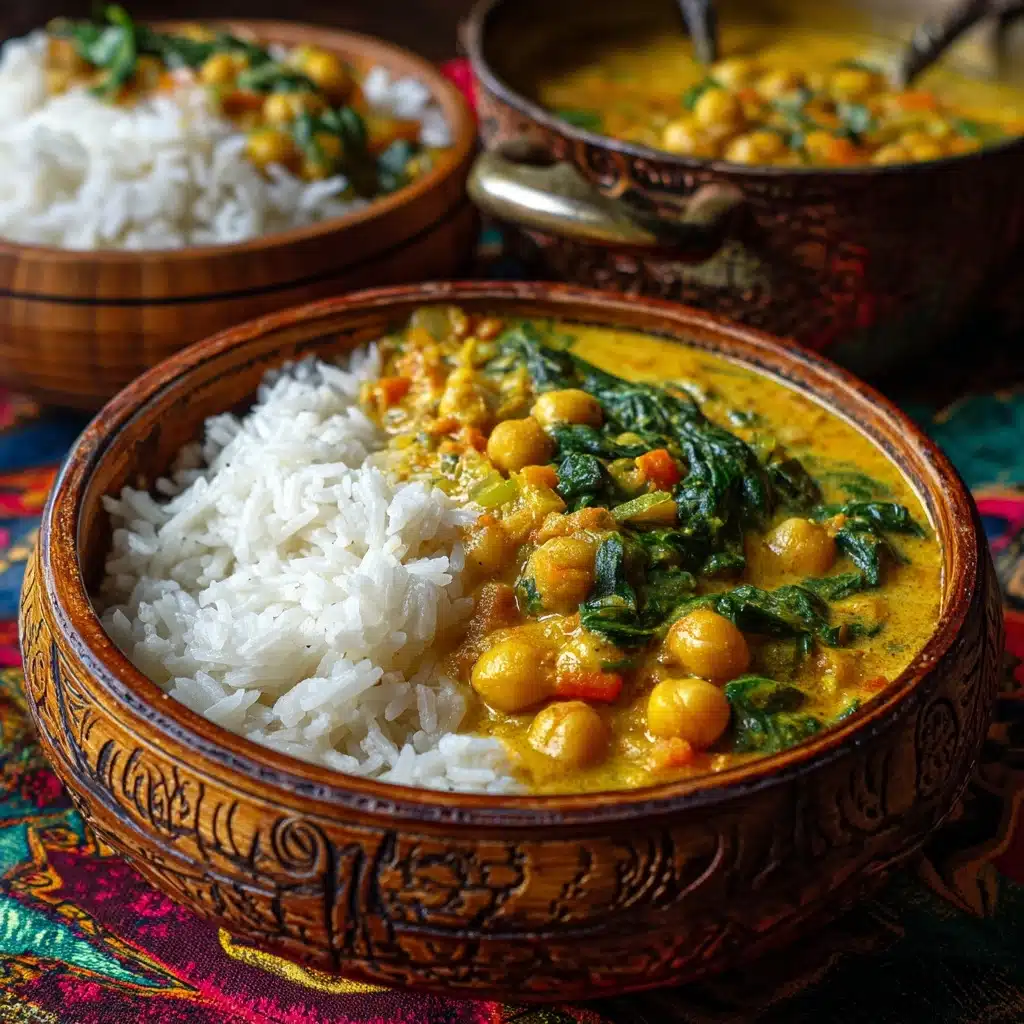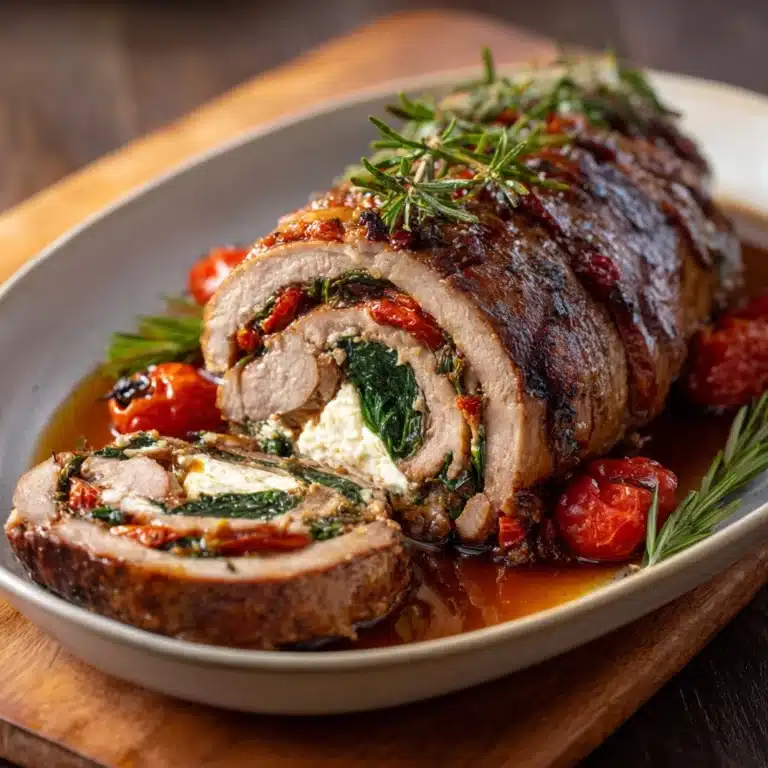If you’ve ever craved comfort food with a bold, aromatic twist, Ethiopian Shiro Wat (Chickpea Stew) will sweep you off your feet. This dish is a vibrant staple in Ethiopian cuisine, built on deeply spiced chickpea flour simmered in a luxuriously creamy sauce. Every spoonful brings warmth, a touch of heat, and a hint of earthiness from traditional spices. Whether you’re a longtime fan of Ethiopian fare or just discovering it for the first time, there’s something incredibly satisfying in sharing a bubbling pot of Shiro Wat with friends and family.

Ingredients You’ll Need
The ingredient list for Ethiopian Shiro Wat (Chickpea Stew) is refreshingly short, but each element brings its own essential character. From aromatic niter kibbeh to the heartiness of shiro powder, every component pulls its weight for that unforgettable flavor and color.
- Niter kibbeh (Ethiopian spiced clarified butter) or unsalted butter: This magical fat infuses the sauce with a subtle warmth and depth; use vegan butter or olive oil if you’re keeping it plant-based.
- Onion: Finely minced and sautéed, onion forms a deliciously sweet and savory foundation for the stew.
- Garlic: Freshly minced garlic lends sharp, aromatic flavor that brightens every bite.
- Fresh ginger: A tablespoon of zingy ginger gives the stew its signature punch and subtle heat.
- Shiro powder (finely ground roasted chickpeas with spices): The star ingredient thickens and flavors the dish with nutty, earthy notes.
- Water or vegetable broth: Choose broth for extra depth, or keep it simple with water; both deliver wonderful results.
- Berbere spice blend: The heart of Ethiopian flavor, this fiery-red mix brings gentle heat and rich aroma.
- Salt: Just enough to highlight all the savory, spicy elements of the stew.
- Black pepper: Adds background warmth and balance.
- Fresh parsley or cilantro, for garnish (optional): A sprinkle of herbs livens up the stew with a pop of color and freshness right before serving.
How to Make Ethiopian Shiro Wat (Chickpea Stew)
Step 1: Sauté the Aromatics
Start by placing a medium saucepan over medium heat and melting your niter kibbeh or butter. Once it’s shimmering and fragrant, add the finely minced onion. Cook gently for 5 to 6 minutes, stirring regularly, until the onion softens and takes on a beautiful golden hue. The sweet aroma at this stage is a hint of all the goodness to come.
Step 2: Add Garlic and Ginger
Stir in the minced garlic and ginger, letting them cook for about a minute. As they mingle with the onions, you’ll notice the stew’s fragrance deepen and develop a rich, bright base that’s the backbone of authentic Ethiopian Shiro Wat (Chickpea Stew).
Step 3: Toast the Shiro Powder
Reduce the heat to low and sprinkle in your shiro powder. Stir continuously, allowing it to toast gently for one to two minutes. This quick step unlocks the full, roasted nuttiness of the chickpeas and helps thicken your stew later. You’re aiming for a subtle, toasty scent—don’t rush it!
Step 4: Whisk in the Liquid
Slowly pour in your water or vegetable broth while whisking so you avoid any lumps, creating a perfectly smooth base. Take your time here—the gradual addition is what gives Ethiopian Shiro Wat (Chickpea Stew) its velvet-like, creamy consistency.
Step 5: Season and Simmer
Add the berbere, salt, and black pepper to the pot. Stir everything together, then let it simmer gently over low heat for 10 to 15 minutes. Stir occasionally until the stew becomes thick and luscious. At this point, taste and adjust your seasonings—every batch of berbere is a little different, and your palate is the final judge!
Step 6: Garnish and Serve
If you like, scatter finely chopped parsley or cilantro over the top for a fresh finish. Your Ethiopian Shiro Wat (Chickpea Stew) is now ready to serve piping hot, perfect for scooping up with traditional injera or a mound of fluffy rice.
How to Serve Ethiopian Shiro Wat (Chickpea Stew)

Garnishes
For a finishing touch, add a sprinkle of fresh parsley or cilantro over your steaming bowl of Ethiopian Shiro Wat (Chickpea Stew). The herbs offer not just a burst of color, but also a bit of brightness that lifts the hearty flavors. If you’re feeling adventurous, a few rings of sliced chili or a small drizzle of extra niter kibbeh make it even more special.
Side Dishes
This stew’s creamy texture and bold spices were born to be paired with spongy, tangy injera—Ethiopia’s beloved flatbread. If you can’t find injera, serve your shiro wat with hot cooked rice, quinoa, or crusty bread. Finish off your plate with simple salads, cooked greens, or quick pickled vegetables—these all balance the richness and bring your meal together like a feast.
Creative Ways to Present
While a big communal platter is tradition, try serving Ethiopian Shiro Wat (Chickpea Stew) in small bowls as an appetizer, or use it as a topping for baked potatoes for a cross-cultural twist. Hosting a party? Set up a “build-your-own injera wrap” bar, so everyone can scoop and roll their own bites—just like they would in Ethiopia!
Make Ahead and Storage
Storing Leftovers
One of the joys of Ethiopian Shiro Wat (Chickpea Stew) is how beautifully it keeps. Let the stew cool completely, then transfer to airtight containers and refrigerate for up to four days. The flavors actually deepen and meld as it sits, making next-day bowls arguably even tastier!
Freezing
Shiro wat freezes well, which means you can tuck away leftovers for a rainy day. Divide cooled stew into freezer-safe containers, leaving a bit of room for expansion. Label and freeze for up to three months. Thaw overnight in the fridge for best texture.
Reheating
To reheat, gently warm the stew over low heat on the stovetop, adding a splash of water or broth to loosen it if needed. Stir often to keep it creamy and prevent scorching. The microwave works in a pinch—just cover and heat in intervals, stirring between bursts until piping hot.
FAQs
Is shiro powder the same as regular chickpea flour?
Not quite! While both are made from chickpeas, shiro powder is specialty roasted and often blended with spices like garlic, ginger, and chili. Its flavor is deeper and more complex than plain chickpea flour, which is why it’s essential for authentic Ethiopian Shiro Wat (Chickpea Stew).
Can I make Ethiopian Shiro Wat (Chickpea Stew) without niter kibbeh?
Absolutely! While niter kibbeh brings unique spicy notes, unsalted butter, vegan butter, or even a neutral oil like olive oil will work just fine—just note the flavor will shift ever so slightly.
How do I adjust the thickness of the stew?
If your Ethiopian Shiro Wat (Chickpea Stew) turns out thicker than you’d like, simply stir in a splash more water or broth until you reach your ideal consistency. If it’s too thin, let it simmer uncovered for a few extra minutes until it thickens up.
Is Ethiopian Shiro Wat (Chickpea Stew) spicy?
It’s as spicy as you make it! The berbere spice blend does bring a gentle heat, but you can adjust the amount to your own preference. Use less for a milder stew, or add an extra pinch for more kick.
Can I make this recipe vegan?
Yes, it’s super simple! Just swap out the niter kibbeh or butter for olive oil or vegan butter, and double-check your broth is plant-based. The rest of the dish is naturally vegan—and absolutely delicious.
Final Thoughts
There’s truly nothing like sitting down to a steaming bowl of Ethiopian Shiro Wat (Chickpea Stew)—it’s the kind of soul-satisfying meal that sparks conversation and invites lingering at the table. Give it a try, share it with people you love, and savor the magic that happens when humble, wholesome ingredients come together. Your kitchen is about to smell (and taste) amazing!
Print
Ethiopian Shiro Wat (Chickpea Stew) Recipe
- Total Time: 30 minutes
- Yield: 4 servings 1x
- Diet: Gluten-Free, Vegetarian, Vegan
Description
Enjoy the rich flavors of Ethiopia with this hearty and aromatic Ethiopian Shiro Wat, a delicious chickpea stew simmered in a fragrant blend of spices. Perfect for a flavorful and satisfying meal.
Ingredients
For the Shiro Wat:
- 1/4 cup niter kibbeh (Ethiopian spiced clarified butter) or unsalted butter
- 1 medium onion, finely minced
- 3 cloves garlic, minced
- 1 tbsp minced fresh ginger
- 3 tbsp shiro powder (finely ground roasted chickpeas with spices)
- 2 cups water or vegetable broth
- 1 tsp berbere spice blend
- 1/2 tsp salt
- 1/4 tsp black pepper
For Garnish:
- Fresh parsley or cilantro (optional)
Instructions
- Prepare the Shiro Wat: In a medium saucepan, melt the niter kibbeh over medium heat. Add onion and cook until soft and golden. Stir in garlic and ginger, then add shiro powder. Cook to release aroma. Gradually whisk in water or broth until smooth.
- Season and Simmer: Add berbere, salt, and pepper. Simmer gently for 10–15 minutes until thick and creamy, stirring occasionally. Adjust seasoning to taste.
- Serve: Enjoy hot with injera or rice. Garnish with parsley or cilantro if desired.
Notes
- Shiro wat is naturally gluten-free and high in protein.
- For a vegan version, use vegetable broth and plant-based butter.
- Adjust thickness by varying liquid amount.
- Prep Time: 10 minutes
- Cook Time: 20 minutes
- Category: Main Course
- Method: Stovetop
- Cuisine: Ethiopian
Nutrition
- Serving Size: 1 cup
- Calories: 210
- Sugar: 4 g
- Sodium: 370 mg
- Fat: 10 g
- Saturated Fat: 5 g
- Unsaturated Fat: 4 g
- Trans Fat: 0 g
- Carbohydrates: 25 g
- Fiber: 6 g
- Protein: 7 g
- Cholesterol: 20 mg







